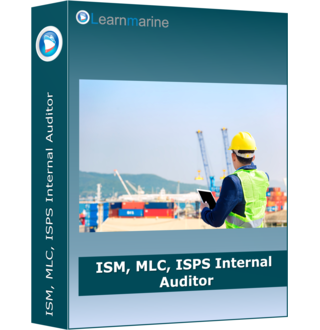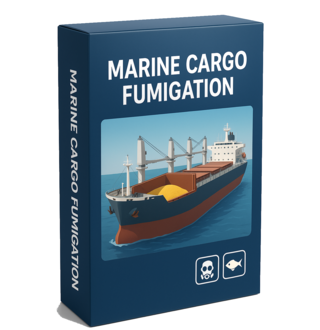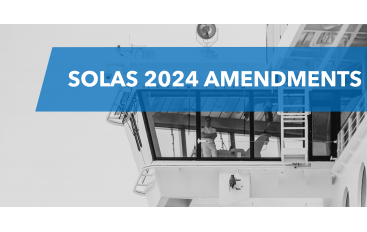Introduction
The global maritime industry faces a profound environmental challenge. Ships carry over 80% of world trade but produce a significant share of pollution, including roughly 13.5% of transport-related CO₂ emissions in the EU. Beyond carbon emissions, shipping contributes to marine pollution, underwater noise, and habitat disturbance. In response, the International Maritime Organisation (IMO) has set ambitious climate targets for shipping: at least a 40% cut in greenhouse gas (GHG) emissions by 2030 (against 2008 levels) and net-zero emissions by 2050. Achieving these goals will require not only new technologies and fuels but also better environmental management across the industry.
One foundational framework guiding maritime companies is the ISO 14001 standard for Environmental Management Systems (EMS). ISO 14001 provides a structured approach for organisations to identify environmental impacts, comply with regulations, set improvement targets, and monitor progress through a continuous improvement cycle (Plan-Do-Check-Act). In theory, an effectively implemented ISO 14001 EMS helps a shipping company align its operations with international climate goals – for example, by tracking fuel consumption and emissions, training crews in pollution prevention, and integrating GHG reduction plans into business strategy. Indeed, the IMO’s 2023 GHG Strategy explicitly cites environmental management systems as a “key enabler” for reaching its 2030/2050 emission targets. Industry groups echo this view: the International Chamber of Shipping notes that while shipping is the most carbon-efficient mode of transport, achieving further cuts will require robust EMS implementation and evidence of action to satisfy regulators, ports, and clients. In short, ISO 14001 offers the maritime sector a blueprint to “plan” for emissions reduction and pollution control in a systematic way.
However, frameworks alone are not a silver bullet. Some maritime companies obtain ISO 14001 certification as a “checkbox” exercise without achieving real performance improvements. Common pitfalls in implementation include: setting vague objectives with no measurable KPIs, failing to address key environmental aspects (e.g. fuel emissions, waste, ballast water discharge), and poor operational controls for high-risk activities. Often, plans exist on paper but are not integrated into day-to-day operations or crew training. Such weak implementation undermines the very purpose of ISO 14001 – a poorly run EMS might formally meet the standard, yet still allow excessive pollution or energy waste. The consequences become tangible: a fragmented or reactive environmental management approach can lead to regulatory violations, reputational damage, and failure to meet the IMO decarbonization targets. In short, ISO 14001 provides the map, but leadership and innovation are needed to actually reach the destination of sustainability.
Innovative Solutions and Technologies
To truly reduce the maritime environmental footprint, companies are pairing management frameworks with technological innovation. The industry is exploring a spectrum of solutions – from alternative fuels (like LNG, green methanol and ammonia) to energy-efficiency retrofits (such as hull air lubrication and wind-assist sails) – in pursuit of cleaner operations. One of the most promising trends is the rise of Uncrewed Surface Vessels (USVs) and autonomous ship technologies. By rethinking vessel design and operations, these innovations can dramatically lower emissions and reduce disturbance to marine ecosystems.
Ocean Infinity and XOCEAN are two standout examples leading this transformation. Both companies operate fleets of unmanned or remotely-operated vessels that achieve missions (like seabed mapping or data collection) with a fraction of the environmental impact of traditional ships. Their approaches illustrate how combining ISO 14001 principles with cutting-edge technology can yield exponential improvements in sustainability.
Ocean Infinity: Redefining Offshore Operations. Ocean Infinity is deploying a fleet called Armada – a series of uncrewed and low-crewed vessels designed to perform offshore surveys and services with minimal emissions and risk. These vessels are operated remotely, allowing for much smaller onboard crews or fully autonomous runs. As a result, crew support systems (like accommodations and life support) are reduced, dramatically cutting fuel usage. Ocean Infinity reports that its remote-controlled survey ships achieve up to 90% lower emissions compared to conventional vessels performing the same tasks. Equally important, the company is future-proofing its energy sources: their new 85-meter robotic ships are being built to run on alternative fuels such as ammonia and methanol, which can significantly reduce or even eliminate carbon emissions. The designs also integrate hybrid propulsion with fuel cells and batteries to maximise energy efficiency, aligning with the IMO’s 2050 decarbonization goals. In practice, Ocean Infinity’s ISO 14001-aligned EMS guides this innovation – environmental objectives are embedded in vessel design and operational planning from the start. This systemic approach exemplifies continuous improvement: each iteration of Armada vessels aims for a lighter footprint and higher efficiency than the last.
XOCEAN: Carbon-Neutral Ocean Data at Scale. XOCEAN, by contrast, operates a large fleet of much smaller USVs to deliver ocean data services (for example, hydrographic surveys or environmental monitoring). These under-8-meter unmanned vessels are launched and controlled remotely, often in swarms, to cover wide areas. XOCEAN’s model prioritises carbon-neutral operations: the company offsets 100% of any emissions from its vessels, and in absolute terms, each USV emits only about 0.1% of the CO₂ that an equivalent conventional survey vessel would. This represents a thousand-fold reduction in carbon footprint for performing the same job. The cumulative impact is significant – in 2024 alone, XOCEAN’s fleet avoided an estimated 35,000 tonnes of CO₂ by substituting traditional ships with their USVs on 225 missions covering 159,000 km. Moreover, these unmanned boats cause minimal disruption to marine life: they are small, quiet, and pose zero risk to human life at sea. Tasks like subsea inspection or offshore wind farm surveys can be done with far less noise and a lower chance of spills compared to large crewed vessels. XOCEAN’s success demonstrates how core ISO 14001 principles – lifecycle thinking, stakeholder engagement, and rigorous measurement of environmental performance – can be realized through technology. By designing sustainability into the service (from vessel fabrication to route planning and offsetting), they exemplify an EMS that doesn’t just exist on paper but drives real-world results.
Relative CO₂ emissions for ocean survey missions by platform. Traditional crewed ships produce vastly higher emissions than advanced uncrewed vessels. In this illustrative comparison (index 100 = emissions of a conventional survey ship), Ocean Infinity’s Armada USV emits roughly 10% of the CO₂, while XOCEAN’s small USV emits only ~0.1%.
Looking ahead, autonomous and remotely operated vessel technologies are poised to grow. By 2030, we may see uncrewed vessels undertaking a wide range of tasks – from marine research to patrol and even short-sea cargo delivery – significantly lowering the industry’s overall emissions. Of course, challenges remain (regulatory frameworks for autonomy, communication infrastructure, and trust in unmanned systems), but the early success of companies like Ocean Infinity and XOCEAN suggests a strong potential for scaling. In essence, these innovations show that decarbonization and reduced marine disturbance are achievable by reimagining how we operate at sea. When paired with a rigorous EMS (ensuring continuous monitoring and improvement), such technologies could help bridge the gap between today’s emissions and the IMO’s 2050 net-zero vision.
Controversies and Underdiscussed Practices
Not all “green” solutions in shipping are as beneficial as they appear. In the race to cut emissions or meet regulations, some measures have had controversial side effects. A prime example is the widespread use of exhaust gas scrubbers on large ships. Scrubbers (technically known as Exhaust Gas Cleaning Systems) are pollution-control devices that remove sulfur oxides from ship exhaust. They became popular after the IMO’s 2020 sulfur cap required ships to reduce sulfur emissions to improve air quality drastically. By installing scrubbers, ship operators can continue burning cheaper high-sulfur fuel oil while still meeting the rules for sulfur output. These systems come in two main types: Open Loop and Closed Loop, each with distinct environmental impacts.
Open-loop scrubbers use untreated seawater to wash exhaust gases, relying on the natural alkalinity of seawater to neutralise sulfur oxides (SOx). While effective at reducing airborne SO₂, this process generates washwater that contains sulfur compounds, heavy metals, and polycyclic aromatic hydrocarbons (PAHs). This washwater is often discharged directly into the sea, raising significant concerns about marine pollution. Moreover, open-loop systems require very high volumes of seawater—between 350 and 800 m³ per hour, depending on engine power, which increases overall water processing and discharge loads.
Closed-loop scrubbers, on the other hand, use a recirculating system with freshwater treated with caustic soda (NaOH). These systems do not discharge wastewater at sea. Instead, once the wastewater reaches a certain contamination level, it is transferred to a dedicated tank and later discharged to port-based treatment facilities. This system eliminates direct sea pollution but requires monitoring and infrastructure for safe handling.
Importantly, neither type of scrubber reduces CO₂ emissions, and in fact, both add a slight increase in fuel consumption due to their energy demands. Critics argue that scrubbers, especially open-loop types, allow continued use of high-sulfur heavy fuel oil (HFO), thereby delaying the transition to cleaner fuels. Some ports and countries have already banned open-loop discharges in their waters, calling for a full phase-out due to risks to ocean ecosystems.
Thus, while scrubbers may provide regulatory compliance on sulfur emissions, they shift pollution from air to sea or create new waste management burdens. Their role in achieving IMO’s climate goals is questionable at best.
It’s worth noting that as of mid-2020, scrubbers have been installed on over 5,000 ships worldwide – a testament to the strong economic incentive they offered shipowners post-2020.
The scrubber debate exemplifies a broader point: some quick fixes or compliance tricks can undermine long-term sustainability. Other under-discussed practices include the heavy reliance on carbon offset schemes (which may lack transparency or real impact) and the use of liquefied natural gas (LNG) as a “transition fuel.” LNG produces less CO₂ than oil, but leaks of methane (a far more potent greenhouse gas) can erase its climate benefit, and there are concerns that investing in LNG infrastructure delays the shift to truly zero-carbon fuels. Each of these strategies has pros and cons that warrant scrutiny. In evaluating any purported solution, one should ask:
Does it solve the problem holistically, or does it simply push the environmental burden elsewhere?

Conclusion
The maritime industry stands at a crossroads in 2025. On one path, it embraces systematic change – combining the guidance of ISO 14001 with innovative technologies and genuine commitment – to achieve a sustainable, low-impact future. On the other path, it risks clinging to half-measures and hidden trade-offs that could fall short of the IMO’s climate goals. Our analysis has surveyed a range of strategies: from robust environmental management systems to futuristic uncrewed vessels, and from cleaner fuels to questionable pollutants-shifting devices. Which of these will steer the shipping sector toward 2030 and 2050 targets?
Some solutions show clear promise. The uncrewed vessel technologies pioneered by Ocean Infinity, XOCEAN and others are proving that dramatic emissions cuts (50–90% or more) are possible here and now for certain operations. Alternative fuels like green ammonia and methanol, while still in early stages, offer a plausible route to zero-carbon shipping if safety and supply issues are resolved. Energy-efficiency measures – from better ship designs to AI-driven route optimisation – can deliver incremental gains that add up across the global fleet. These realistic, impactful strategies have a few things in common: they involve upfront investment, cross-disciplinary innovation, and a willingness to depart from business-as-usual. Importantly, they also benefit from a strong EMS backbone. An ISO 14001 framework can ensure that when a new technology is adopted, its performance is tracked, its risks are managed, and the lessons learned feed into continual improvement.
On the other hand, some approaches seem questionable for the long term. Exhaust gas scrubbers, as discussed, achieve compliance on one pollutant but at the expense of another, and do not move the needle on climate change, making them at best a stop-gap and at worst a distraction from real solutions. Heavy reliance on carbon offsets can be problematic too: if shipping companies claim carbon-neutrality through purchased credits without actually cutting their own emissions, the atmosphere still sees the same amount of CO₂. Such tactics might buy time or goodwill, but they don’t fundamentally bend the emissions curve downward. In the coming years, stakeholders – from regulators to cargo customers – are likely to become more savvy in distinguishing meaningful progress from greenwashing.
Does ISO 14001 itself do enough to guide the industry to climate goals? The standard provides a crucial framework, but it is not a substitute for ambition. ISO 14001 ensures that a company has a process to manage environmental issues – how well that process is used is up to the company’s culture and leadership. In practice, ISO 14001 can greatly aid progress when paired with clear targets (like aligning company GHG cuts with IMO’s 40% by 2030 goal) and when it’s treated as a strategic tool rather than a checkbox. Successful adopters often integrate ISO 14001 with their overall business strategy and other systems (safety, quality, energy management), creating a feedback loop of improvement. In those cases, the standard does contribute meaningfully – it institutionalises sustainability thinking and holds the company accountable through audits and performance reviews. On the other hand, ISO 14001 can fall short if implemented superficially. A ship owner could be certified yet still burn high-sulfur fuel outside regulated zones or delay fleet upgrades, as long as they have procedures and paperwork in place. Thus, ISO 14001 is necessary but not sufficient. It builds the foundation for environmental performance, but reaching lofty goals like net-zero by 2050 requires building on that foundation with real investment, innovation, and sometimes tough decisions that go beyond what any single standard can prescribe.
In conclusion, the maritime industry’s journey to sustainability will demand an all-of-the-above strategy: strong management systems, bold technological innovation, transparent practices, and proactive culture change. ISO 14001 is a powerful tool in this arsenal – one that can unify efforts and keep companies accountable – but it must be leveraged with earnest intent. The next decade will reveal which players can turn standards into real-world progress. If the pioneering examples are any indication, those who innovate and hold themselves to high environmental standards stand to not only meet the IMO’s climate goals, but also to thrive in a world that increasingly values green seafaring.
References
-
IMO GHG Strategy (2023): https://www.imo.org/en/OurWork/Environment/Pages/2023-IMO-Strategy-on-Reduction-of-GHG-Emissions-from-Ships.aspx
-
EMSA European Maritime Transport Environmental Report 2025: https://www.emsa.europa.eu/emter-2025/full-report.html
-
ICS Environmental Performance:
https://www.ics-shipping.org/shipping-fact/environmental-performance-environmental-performance/ -
Ocean Infinity Armada Project: https://oceaninfinity.com/ocean-infinity-launch-armada/
-
XOCEAN Overview: https://xocean.com/
-
Scrubber pollution study (Nature Sustainability, 2024): https://www.nature.com/articles/s41893-024-01102-x
-
ISO Practical Guide: https://www.iso.org/publication/PUB200140.html
-
OECD Ocean Economy Programme: https://www.oecd.org/en/topics/ocean.html
-
Global Ship Lease ESG Report: https://www.globalshiplease.com/static-files/12dcbe09-06f9-4361-8846-7b50f8251fc8
-
ZIM ESG Report 2022: https://www.zim.com/assets/wahpdx3e/zim-esg-report-2022.pdf
-
Survitec ESG Report: https://survitecgroup.com/media/x1vl3kyz/survitec-esg-report.pdf










Comments